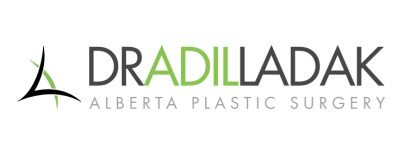Resources For Informed Decisions
When a person opts for breast augmentation surgery, the decision is highly personal. It is most likely that they have put much thought into the impacts and outcomes of the surgery, consulted with a skilled and experienced plastic surgeon, and sought advice or support from friends or family. As with any cosmetic plastic surgery, there are risks associated. Breast augmentation comes with the additional risks associated with the placement of a non-natural device to refine the size and shape of the breasts. Here is what you need to know about the Summary Safety Review on Breast Implants from Health Canada.
What Is The Summary Safety Review?
In 2017 and 2019, Health Canada completed safety reviews in response to a serious, but rare cancer of the immune system that was linked to breast implants. This cancer is called Breast implant-associated anaplastic large cell lymphoma or BIA-ALCL. This cancer is a type of non-Hodgkin lymphoma. It is not a breast tissue cancer. It typically presents as an accumulation of fluid between the implant and tissues surrounding the implant. It sometimes presents as a lump or mass. This is a very slow progressing cancer and when diagnosed early, health outcomes are very positive. The cause of BIA-ALCL is not completely understood.
What Does The Report Say?
The purpose of the report is to understand the connection between an increased risk of BIA-ALCL and certain types of breast implants. Here is what Health Canada found:
- The risk of BIA-ALCL is associated with the surface texture of the breast implant.
- Macro-textured implants have an estimated risk of 1 in 1,636. This is classified as “rare”.
- Micro-textured implants have an estimated risk of 1 in 17,627. This is classified as “extremely rare”.
- There are no confirmed cases of BIA-ALCL in Canadian patients who have only had smooth breast implants.
Some Additional Information…
As the name implies, textured implants are designed with a pebbled or rough outer shell to encourage attachment to the surrounding tissue after implant surgery. The degree of texturing is labelled as “macro” (more textured) and “micro” (less textured). Smooth implants have a slick outer shell and will not attach to surrounding tissue after implant surgery.
In Canada, macro-textured implants are no longer available, but some patients may have them from augmentation surgery performed in years past.
What Does This Mean For You?
If you have breast implants: If you have breast implants you need to understand the risks of BIA-ALCL associated with macro-textured, micro-textured, and smooth implants. If you know that you have textured implants you should discuss your concerns with your primary health care provider. At this time, Health Canada does not recommend the removal of your breast implants if you are not exhibiting signs or symptoms of BIA-ALCL because:
- There are risks associated with the removal or replacement of breast implants.
- Removal of your breast implants does not eliminate all risks that are associated with BIA-ALCL.
- BIA-ALCL progresses very slowly and health outcomes are excellent when it is diagnosed and treated at the earliest stages.
If you are considering breast augmentation surgery: Understanding the types of implants that are available to you and the associated risks for BIA-ALCL after breast implant surgery can help you make the most informed decisions regarding your health. Health Canada continues to monitor the connection between breast implants and BIA-ALCL and to publish any new findings. Finding a plastic surgeon who is committed to providing you with the most up-to-date information is critical to your decision.
Alberta Plastic Surgery Is Committed To Patient Education
Our team is committed to the highest levels of transparency and education so that our patients can feel confident they are making the best decisions on their journey to look and feel their very best. If you would like to discuss your concerns regarding your current breast implants or if you are considering breast augmentation and would like the most accurate and up-to-date information, book your complimentary consultation today.
Dr. Adil Ladak is a board-certified and top surgeon in Edmonton, Alberta, and is highly skilled in cosmetic plastic surgery and other non-surgical rejuvenating cosmetic procedures. Dr. Ladak is a fully qualified Fellow of the Royal Canadian College of Physicians and Surgeons and his team is committed to providing patients with the facts and education to make the most informed decisions about their appearance and health. To explore all of your options to help you feel and look your best, visit Alberta Plastic Surgery in Edmonton by booking your complimentary consultation. Call us at 1-780-407-6691 or fill out the form below.
FAQ
Q: Can I read this report myself?
A: Absolutely. This report is available to all Canadians on the Government of Canada website. You can access it directly here. If you have questions or would like clarity on some of the findings book a complimentary consultation with Dr. Ladak here.
Q: Is BIA-ALCL associated with saline or silicone implants?
A: Breast implant-associated anaplastic large cell lymphoma has been associated with both silicone and saline implants.
Q: What are the symptoms of Breast implant-associated anaplastic large cell lymphoma?
A: Common symptoms associated with BIA-ALCL include:
- Persistent swelling
- Enlargement of the breast
- Asymmetry of the breasts
- Pain and tenderness
- A lump in the armpit or breast tissue
- Skin rash
- Extensive fluid accumulation
- Hardening of the breast






